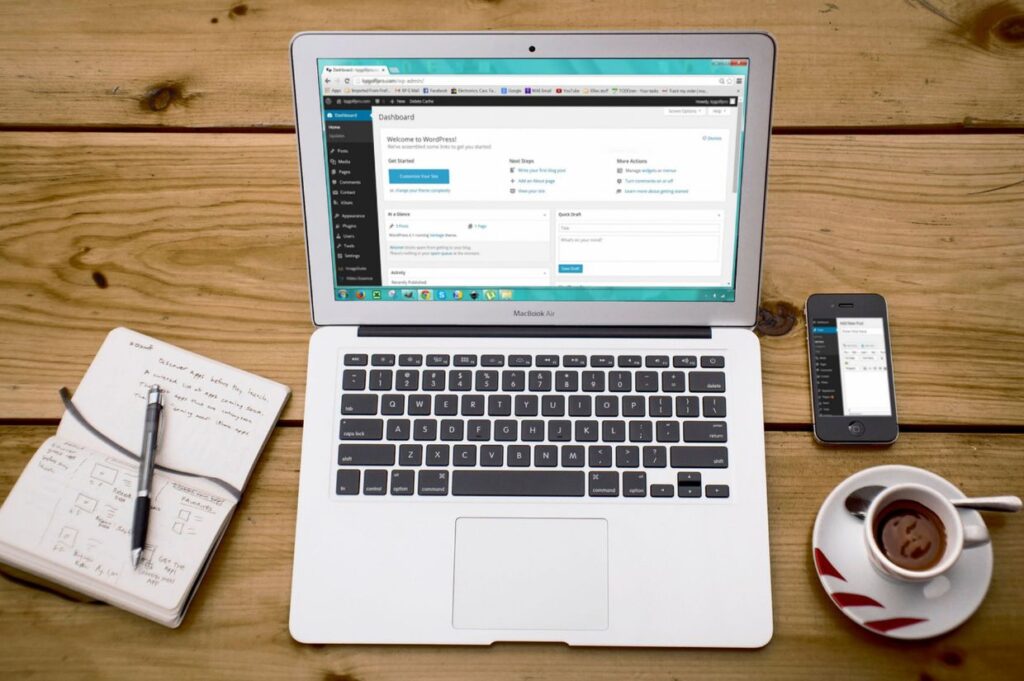Building a blog from scratch might seem intimidating, but it’s easier than you think! Whether you’re looking to share your passion for travel, food or just about anything else, blogging offers a great way to connect with others who share your interests. If you’ve been thinking about starting a blog but don’t know where to begin, don’t worry — we’ve got you covered. In this guide, we’re walking through every step you need to take to get your blog up and running.

Step 1: Choosing your niche
The first thing you’ll want to figure out is what you will blog about. This is your niche and will be the foundation of everything you create moving forward. Don’t stress too much about picking the perfect niche, but aim for something you’re passionate about and have knowledge in. Whether it’s fashion, tech, cooking, fitness or even gardening, the more you enjoy the topic, the easier it’ll be to write engaging content consistently.
Pro tip: Find a balance between what you love and what people search for. A little research can go a long way — use tools like Google Trends or Ubersuggest to see what’s popular and where there might be gaps you can fill.
Step 2: Picking a domain name
Your domain name is essentially your blog’s address on the internet. It’s what people will type in to find your site. Ideally, your domain name should be short, memorable and related to your niche.
Here are a few tips for choosing a domain name:
- Keep it simple: You want people to remember it easily and spell it correctly.
- Use keywords: If possible, include a word related to your niche (e.g., if you’re starting a food blog, something like “cookwhatyoulove.com” might work).
- Avoid numbers or hyphens: They can be confusing and make your domain harder to remember.
Once you’ve got a domain in mind, you can use a service like GoDaddy or Namecheap to check if it’s available and purchase it.
Step 3: Choosing a blogging platform
Next up, you’ll need to choose a blogging platform. Your blog will live here, and quite a few options exist. For most beginners, WordPress.org is the go-to choice. It’s user-friendly, highly customizable and great for SEO. The big difference between WordPress.org and WordPress.com is that with the .org version, you have more control over your site (and you can monetize it later).

Other popular platforms include:
- Blogger: A free option, but more limited in terms of customization.
- Wix: Great for beginners who want drag-and-drop functionality.
- Squarespace: A bit pricier, but very visually appealing and easy to use.
Step 4: Setting up web hosting
Now that you’ve chosen your platform, it’s time to set up web hosting. Web hosting is what makes your blog accessible to people online. If you’re using WordPress.org, you must pick a hosting provider. Some of the popular ones include:
- Bluehost: Known for its affordability and ease of use for beginners.
- SiteGround: Slightly more expensive but offers great customer support.
- HostGator: Another budget-friendly option with solid features.
- BigScoots: A popular hosting site that’s on the pricy side, but offers quick and solid support.
Once you’ve chosen a hosting plan, you can connect your domain name to your hosting provider, and voilà — you’ve got yourself a live website!
Step 5: Designing your blog
This is the fun part! With your domain and hosting set up, it’s time to make your blog look good. Most blogging platforms, especially WordPress, offer a variety of themes to choose from. You can pick a free theme or buy a premium one for a more polished or professional look.
Here are some things to keep in mind when designing your blog:
- Keep it simple: Don’t overwhelm your readers with too many colors, fonts or flashy graphics.
- Be user friendly: Make sure your navigation is clear and easy to use. Categories, tags and a search bar are helpful.
- Responsive design: Your blog should look good on both desktop and mobile devices. Most themes these days are mobile friendly, but always double-check!
Step 6: Creating content
Now that your blog is set up and looking good, it’s time to get writing. When it comes to blogging, content is king. You want your posts to be engaging, informative and valuable to your readers.

Start by planning out your first few posts. If you’re not sure what to write about, brainstorm some topics that align with your niche. You can also do a little keyword research to see what questions people are asking in your field. This way, your posts can be helpful to those searching for answers.
When creating your posts:
- Use a conversational tone: Write like you’re talking to a friend. This will make your content more relatable and easier to read.
- Be consistent: Try to stick to a posting schedule — whether that’s once a week or twice a month, being consistent is key.
- Include visuals: Photos, infographics and videos can break up the text and make your posts more engaging.
Step 7: Promoting your blog
Congratulations — you’ve officially launched your blog! But now comes the hard part: Getting people to read it. Promotion is crucial for growing your blog’s audience.
Here are a few ways to get started:
- Social media: Share your posts on platforms like Instagram, Twitter and Facebook. Engage with your audience, and don’t be afraid to promote yourself a little.
- Search engine optimization (SEO): SEO helps your blog posts rank higher in Google searches. Focus on using keywords, creating valuable content and building backlinks.
- Networking with other bloggers: Engage with other bloggers in your niche by commenting on their posts, sharing their content or even collaborating on projects.
Step 8: Monetizing your blog (optional)
Once you’ve built up an audience, you may want to explore ways to make money from your blog. Here are a few options:
- Affiliate marketing: Recommend products or services and earn a commission for every sale made through your unique affiliate link.
- Sponsored posts: Partner with brands that want to reach your audience and get paid to create content around their products.
- Advertising: Use platforms like Google AdSense to display ads on your blog and earn money based on clicks or impressions.
Remember, monetizing a blog takes time, so focus on building quality content and an engaged audience before diving into money-making strategies.
Final thoughts
Starting a blog from scratch can feel overwhelming, but you’ll have a great foundation to build on by taking it step by step. The most important thing is to stay patient and consistent — your blog’s success won’t happen overnight, but with time and effort, it will grow.
